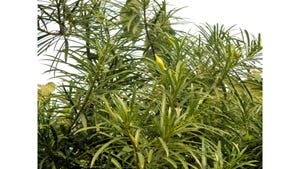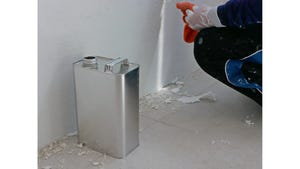Should You Use Nitrogen for Your Size Reduction Operation?
March 24, 2015
By Tim Boland, Air Products
Size reduction of solid materials is one of the most important technologies in the modern world because of the breadth of products it impacts. While size reduction is a widely practiced technology, it is not a particularly energy-efficient process. It has been estimated that only a small fraction of the energy supplied to a size reduction process can be associated with fracturing particles. The majority of the energy is converted into heat, which can damage heat-sensitive materials. The heat generated during grinding can also make it difficult, if not impossible, to pulverize materials that are relatively “soft” at room temperature. These “soft” materials include many substrates made from polymers, such as powder coatings, rotational molding compounds, or organic compounds with moderate melting points, such as waxes.
Liquid nitrogen has been used for over 50 years for cooling size reduction processes. Liquid nitrogen is very cold (-320°F at 1 atmosphere), so it can cool grinding processes to very low temperatures. The capital costs of liquid nitrogen refrigeration systems are typically much less than the capital costs of traditional refrigeration systems. Since liquid nitrogen is typically sprayed directly onto the material being ground, there are no heat transfer surfaces that must be kept clean. Liquid nitrogen is widely available in North America and when used properly, is an effective means of cooling grinding processes.
The potential for a dust explosion must be evaluated before grinding a combustible solid. Over 10% of known dust explosions have been associated with size reduction equipment. The size reduction process can combine the five elements required to produce a dust explosion including:
1. The presence of a dust. The dust could be a product of the size reduction process or it could be present in the materials feeding the process. Special care must be taken when grinding metals, such as aluminum or magnesium, which can be dangerous regardless of the size of their particles. Materials such as coal and sulfur or materials wet with liquid solvents also require additional care because they may release flammable volatiles during processing.
2. The presence of an oxidizing gas, typically air
3. The dust must be dispersed and suspended in the oxidizing gas at levels above the minimum explosive concentration (MEC). Typically, this dispersion and suspension is inherent in the grinding process. “Transition” operations during grinding, such as loading, unloading, or emergency shutdowns, are especially critical to evaluate because dust clouds may be released to the plant environment during these operations.
4. The dust-gas mixture must be enclosed.
5. There must be an ignition source. Size reduction operations can create ignition sources from the static electricity generated by particle movement, from over-heated bearings, or from frictional heating. Many grinding machines operate at high speeds that can easily generate sparks or frictional heating if tramp metals enter the grinding chamber. The grinder may also produce the ignition source, for example a hot piece of tramp metal that ignites material outside the grinder, such as in conveying equipment or in a baghouse.
A dust explosion should not occur if one or more of these five elements are eliminated. In many cases, removing the oxidizing gas by replacing it with gaseous nitrogen is a simple, robust way to minimize the risk of a dust explosion. Inerting size reduction operations with nitrogen gas should be considered whenever a combustible solid or a solid wet with a liquid solvent is processed.
The chemical industry has been using gaseous nitrogen inerting to minimize the hazards of handling flammable liquids for many years. NFPA standards 69: Standard on Explosion Prevention Systems and 654: Standard for the Prevention of Fire and Dust Explosions from the Manufacturing, Processing, and Handling of Combustible Particulate Solids discuss the use of inert gas systems to minimize fire hazards. Inerting a size reduction process with nitrogen gas is a proven technology that can be easily implemented.
Tim Boland is a senior principal engineer at Air Products (Allentown, PA). He has 30 years of experience in the areas of size reduction, cryogenic technology, and equipment manufacturing. He also has extensive experience in the use of industrial gases, such as oxygen and nitrogen, and the equipment and technologies associated with the use of these gases. He holds a BSChe from Lehigh University, an MSChE from the University of Akron, and an MBA from DeSales University.
For related articles, news, and equipment reviews, visit our Size Reduction Equipment Zone
You May Also Like

